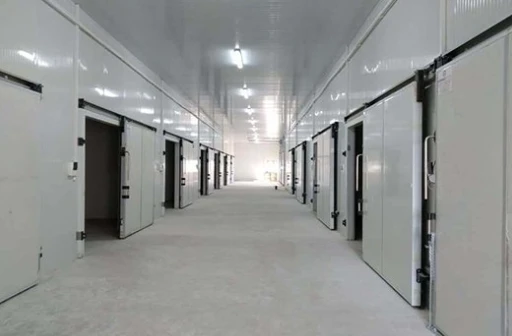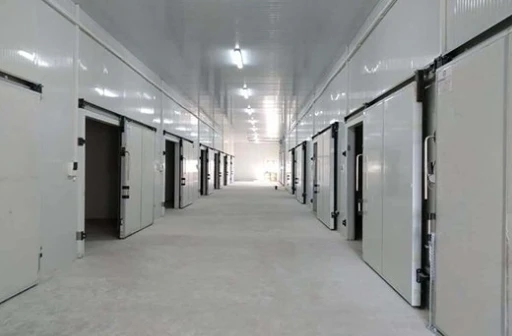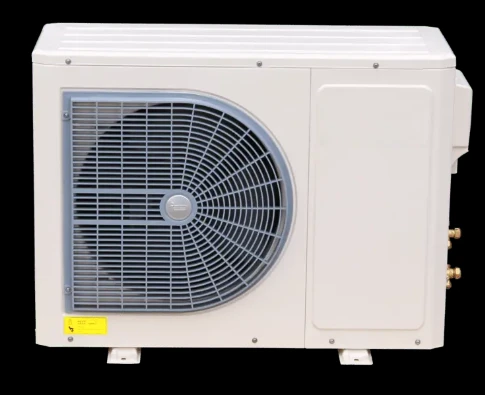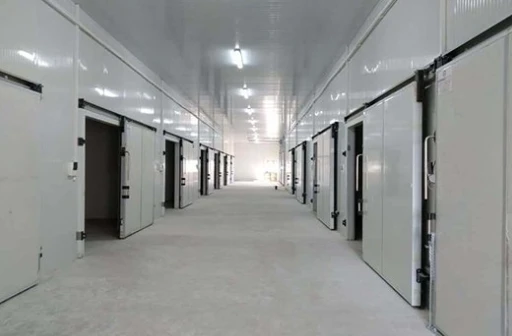Cold Room Door Durability
In the world of cold storage, where maintaining precise temperatures is crucial for preserving goods, the role of specialized doors cannot be overstated. Cold storage facilities, whether used for food preservation, pharmaceutical storage, or industrial cooling, rely heavily on their doors to uphold the integrity of the controlled environment. Among the most vital components are cold room door, sliding cold room door, and insulated cold room doors. These doors are not mere entry points; they are engineered to prevent heat infiltration, reduce energy waste, and ensure the stability of internal temperatures. Understanding the unique features, benefits, and applications of each type is essential for anyone involved in designing, operating, or maintaining cold storage systems. This article will delve into the specifics of these doors, offering insights to help you choose the right option for your needs.
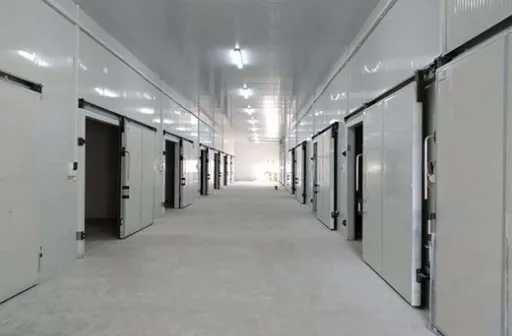
The Critical Role of cold room door in Maintaining Cold Storage Integrity
Cold room door serve as the primary barrier between the controlled cold environment inside a storage unit and the external warmth, making them indispensable for preserving the efficiency of cold rooms. They are designed to withstand extreme temperature differences, ensuring that the cold air remains trapped inside and hot air stays out, which directly impacts the quality and longevity of stored products. Without a properly functioning cold room door, even the most advanced cold storage system would fail to maintain consistent temperatures, leading to spoilage of perishables, loss of pharmaceutical efficacy, or compromised industrial processes.cold room door are built to be durable, with materials that can resist the wear and tear of frequent use, as well as the harsh conditions of low temperatures. They also come in various sizes and configurations to fit different cold room designs, from small walk-in units to large industrial chambers, ensuring a snug fit that minimizes air leakage.Whether in a restaurant’s walk-in freezer, a grocery store’s cold storage, or a pharmaceutical warehouse, thecold room dooris a silent workhorse that keeps the entire system running smoothly.
How sliding cold room door optimize space and efficiency in tight quarters
Sliding cold room door are a game-changer for cold storage facilities where space is limited, offering a practical solution that maximizes usable area. Unlike traditional swinging doors, which require ample clearance to open and close, sliding cold room door glide along a track, either horizontally or vertically, eliminating the need for extra space in front of or behind the door. This makes them ideal for small cold rooms, busy warehouses with narrow aisles, or facilities where every square foot of space is valuable for storage or operations.Another key advantage of sliding cold room door is their ability to reduce air exchange during use. When a swinging door is opened, it creates a larger gap for cold air to escape and warm air to enter, but sliding cold room door open gradually, minimizing the size of the opening at any given moment.This helps maintain stable internal temperatures and reduces the workload on cooling systems, leading to energy savings over time.Additionally, sliding cold room door are often equipped with automatic closing mechanisms, ensuring they seal properly even in high-traffic environments where manual closing might be overlooked.
The Energy-Saving Benefits of insulated cold room doors for Long-Term Cost Efficiency
Insulated cold room doors are engineered to be the ultimate guardians of temperature control, leveraging advanced insulation technology to minimize heat transfer and reduce energy consumption. The core of these doors is typically made from high-performance insulating materials, such as polyurethane foam or polystyrene, which are dense and have low thermal conductivity. This means they resist the flow of heat from the warmer external environment into the cold room, keeping the internal temperature stable without requiring the cooling system to work overtime.For businesses, this translates to significant long-term cost savings on energy bills, as insulated cold room doors reduce the frequency and duration of cooling system operation.Beyond energy efficiency, insulated cold room doors also contribute to maintaining consistent humidity levels inside the cold room, which is critical for preserving the quality of moisture-sensitive products like fruits, vegetables, and certain pharmaceuticals.They prevent condensation from forming on the door’s surface, which can lead to frost buildup, ice dams, or mold growth—all of which can compromise the cold room’s performance and the integrity of stored goods.
Maintenance Tips to Extend the Lifespan of cold room door,sliding cold room door, and insulated cold room doors
Proper maintenance is essential to ensure that cold room door, sliding cold room door, and insulated cold room doors continue to perform optimally for years. Here are key maintenance practices to follow, organized by door type:
- For all door types:Regularly inspect the door seals (gaskets) for cracks, wear, or damage. Damaged seals are the primary cause of air leakage, so replace them immediately if they show signs of deterioration. Clean the seals with a mild detergent to remove dirt and debris that can prevent a tight seal. Lubricate hinges, tracks, or sliding mechanisms (for sliding cold room door) with a cold-resistant lubricant to ensure smooth operation, as low temperatures can cause parts to stiffen.
- Specific tosliding cold room door : Clean the tracks regularly to remove dirt, ice, or debris that can obstruct the door’s movement. Check the alignment of the door periodically—misalignment can cause uneven wear on the track and seals, leading to poor performance.Test automatic closing mechanisms to ensure they are functioning correctly, adjusting sensors or timers as needed to prevent the door from staying open too long.
- Specific toinsulated cold room doors : Inspect the insulation core for signs of moisture damage, such as soft spots or discoloration, which can indicate a breach in the door’s outer layer. Avoid using sharp objects to scrape ice or frost from the door surface, as this can damage the insulation or outer skin.If the door has a window, clean it with a non-abrasive cleaner to maintain visibility without scratching the glass, which could reduce insulation effectiveness.
By following these practices, you can extend the lifespan of your doors, reduce repair costs, and ensure they continue to protect the integrity of your cold storage environment.
FAQs about cold room door,sliding cold room door, and insulated cold room doors
How durable is a standard cold room door with regular use?
A standard cold room door is highly durable, typically lasting 10 to 15 years with regular use and proper maintenance. The lifespan can be extended to 20 years or more in low-traffic environments where the door is not subjected to frequent slamming or heavy impact. Factors such as the quality of materials (e.g., stainless steel vs. galvanized steel) and the harshness of the cold room’s temperature (colder temperatures may slightly reduce lifespan) also play a role, but overall, cold room door are built to withstand the rigors of daily operation in cold storage settings.
What makes sliding cold room doora better choice for high-traffic cold rooms?
Sliding cold room door are ideal for high-traffic environments due to their design, which minimizes disruptions to temperature control. In busy facilities, doors are opened and closed frequently, and each opening risks cold air loss. Unlike swinging doors, which create a large, temporary gap, sliding cold room door open and close in a linear motion, reducing the size of the opening at any point in time.This limits the amount of warm air entering and cold air escaping, helping to maintain stable internal temperatures even during peak hours.Additionally, many sliding cold room door are equipped with motion sensors or push-button controls, allowing for hands-free operation—critical in environments where workers are handling goods and may not have free hands to open doors manually.
How effective are insulated cold room door sat preventing condensation?
Insulated cold room doors are highly effective at preventing condensation, thanks to their superior insulation and design features. Condensation occurs when warm, humid air comes into contact with a cold surface, but the thick insulation in these doors keeps the outer surface much warmer than the internal surface. This reduces the temperature difference between the door and the external air, making condensation less likely to form.Many insulated cold room doors also include vapor barriers or anti-condensation coatings on their outer surfaces, which further repel moisture.In cases where condensation does occur (e.g., in extremely humid environments), the doors are often designed with drainage channels to direct moisture away from the door and prevent pooling, which could lead to mold or ice buildup.
Can sliding cold room door be customized to fit non-standard cold room sizes?
Yes, sliding cold room door can be fully customized to fit non-standard cold room sizes and configurations. Manufacturers offer made-to-measure options, where the door’s width, height, and track length are tailored to the specific dimensions of the cold room opening. This flexibility makes them suitable for irregularly shaped spaces, such as cold rooms with angled walls or unique entry points.Customization also extends to features like the type of sliding mechanism (horizontal or vertical), the material of the door panel (stainless steel, aluminum, etc.), and the inclusion of windows or access ports for visibility or small-item retrieval.Whether your cold room is unusually large, small, or shaped, sliding cold room doorcan be designed to provide a perfect fit and reliable performance.
What signs indicate that a cold room door needs to be replaced rather than repaired?
Several signs indicate that a cold room door should be replaced instead of repaired. If the door frame is severely warped or damaged, making it impossible to achieve a tight seal even with new gaskets, replacement is necessary. Similarly, if the insulation core (especially in insulated cold room doors) is compromised—such as by moisture damage that causes the insulation to lose its effectiveness—repairing it is often impractical, and a new door is a better long-term solution.Frequent breakdowns of mechanical components, such as hinges, locks, or sliding mechanisms (in sliding cold room door), can also signal that the door has reached the end of its lifespan, as repeated repairs may cost more than investing in a new door. Finally, if the door no longer meets your facility’s evolving needs (e.g., increased traffic, stricter energy efficiency requirements), upgrading to a new, more suitable model is advisable.
If you’re looking to upgrade your cold room doors or are planning a new cold storage project, we invite you to visit our website. Our experts will guide you through our range of cold room door, sliding cold room door, and insulated cold room doors, helping you select the perfect fit based on your space, traffic, and temperature requirements. See firsthand the quality of our materials, the precision of our customization, and the durability of our designs. Don’t compromise on the integrity of your cold storage—let us help you choose doors that deliver reliability, efficiency, and long-term value. Contact us today to schedule your visit and take the first step toward optimizing your cold storage facility.













































































































